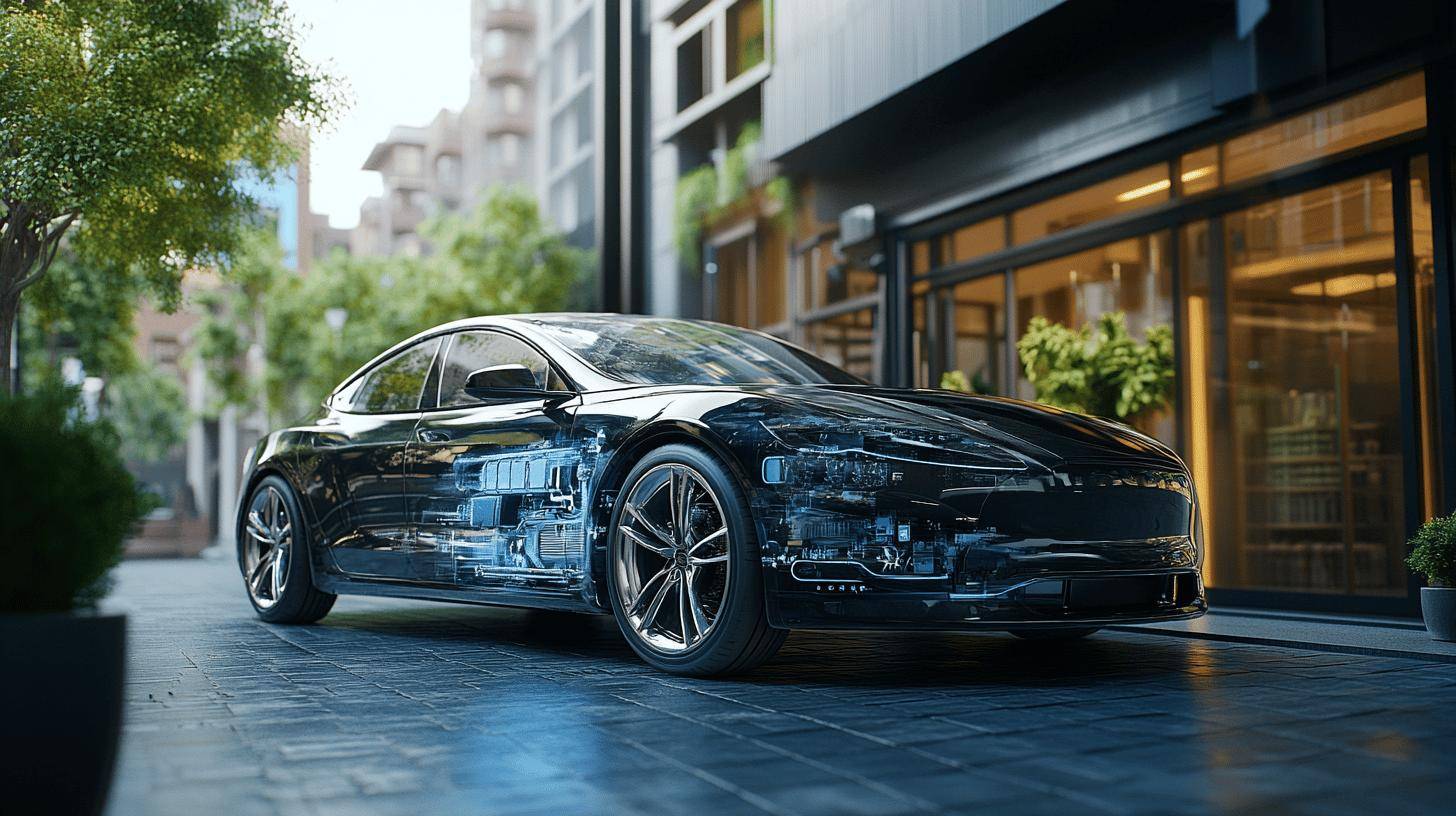Imagine a world where your vehicle not only purrs with power but also treads lightly on the earth. This is the promise of hybrid vehicles—a harmonious blend of conventional engines and electric motors. But did you know there are distinct types of hybrid cars, each with unique benefits and technology? From Full Hybrid Electric Vehicles (FHEVs) to Plug-in Hybrids (PHEVs), these marvels of innovation cater to various driving needs. Understanding these differences is crucial for anyone considering better fuel efficiency and reduced emissions. Delve into the world of hybrid systems and unlock the potential benefits of these eco-friendly machines.
Exploring Different Hybrid Car Types
Hybrid vehicles are a combination of a petrol or diesel engine and an electric motor, designed to enhance fuel efficiency and reduce CO2 emissions compared to traditional vehicles. This dual power source helps in cutting down fuel consumption and emissions, making hybrid vehicles a more environmentally friendly option.
There are four main types of hybrid cars:
- Full Hybrid Electric Vehicles (FHEVs): These vehicles can run on the combustion engine alone, electric power alone, or a combination of both, providing versatile driving modes. FHEVs are capable of operating solely on electric power at lower speeds, making them efficient in urban environments.
- Mild Hybrid Electric Vehicles (MHEVs): MHEVs utilise a smaller electric generator to support fuel-intensive activities, enhancing overall fuel efficiency without the need for external charging. They feature a 48-volt system and use regenerative braking to recharge, which assists in reducing emissions.
- Plug-in Hybrid Electric Vehicles (PHEVs): Equipped with larger batteries, PHEVs can be charged via external power sources. They primarily operate on electric power, using the fuel engine as a backup for longer journeys. This offers greater electric-only ranges compared to full hybrids.
- Range-Extended Electric Vehicles (REEVs): These vehicles contain an electric battery and a small petrol engine that acts as a range extender. When the battery is low, the engine either charges the battery or powers the electric motor, extending the driving range.
Hybrid systems provide several advantages, including improved fuel economy, reduced greenhouse gas emissions, and lower operational costs. By utilising both electric and fuel power, hybrid cars reduce reliance on fossil fuels, making them a sustainable choice for modern transportation needs.
Full Hybrids: Versatility in Driving Modes
Full Hybrid Electric Vehicles (FHEVs) are designed to provide a versatile driving experience by incorporating both a gasoline engine and a robust electrical component. This configuration allows FHEVs to operate in multiple modes, either using the combustion engine alone, the electric motor alone, or a combination of both. This flexibility is particularly beneficial in varying driving conditions, offering greater efficiency in urban settings by running solely on electric power at lower speeds.
The hybrid fuel economy of full hybrids is a significant advantage. By switching between or combining the electric motor and gasoline engine, FHEVs maximise fuel efficiency and minimise emissions. This dual capability reduces the reliance on fossil fuels, leading to lower operational costs for the driver. In urban driving conditions, where frequent stops and starts are common, the electric motor can take precedence, resulting in substantial fuel savings and a more sustainable transportation option.
The Role of Mild Hybrids in Modern Vehicles
Mild hybrids integrate a small electric generator alongside the traditional combustion engine to assist during fuel-intensive activities, such as acceleration, without needing external charging. This system enhances hybrid efficiency by reducing fuel consumption and emissions. The 48-volt electric system powers the generator, recharging itself through regenerative braking, which converts kinetic energy into electrical energy, further boosting fuel economy.
- It utilises a 48-volt electric system to support the combustion engine.
- Enhances fuel efficiency and reduces emissions.
- Does not require external charging.
- Recharges through regenerative braking.
- Provides additional torque during acceleration.
Mild hybrid car maintenance is generally straightforward, as these vehicles do not have large battery packs or complex charging systems that require special attention. Regular checks on the 48-volt system and ensuring the regenerative braking system functions correctly are essential. This simplicity in maintenance contributes to the overall appeal of mild hybrids, offering a balance of improved efficiency and manageable upkeep for modern drivers.
Understanding Plug-in Hybrids
Plug-in Hybrid Electric Vehicles (PHEVs) are a distinct type of hybrid technology characterised by their ability to operate primarily on electric power. PHEVs are equipped with larger batteries compared to regular hybrids, which are charged through external power sources, such as home charging stations or public chargers. This capability enables PHEVs to cover substantial distances on electric power alone, resorting to the internal combustion engine only as a backup for longer trips. By integrating both electric and fuel power systems, PHEVs offer a flexible and efficient driving experience particularly suited for urban commuting and short journeys.
Benefits of Plug-in Hybrids
- Lower Fuel Costs: By operating mainly on electric power, PHEVs reduce the need for petrol or diesel, leading to significant savings on fuel expenses.
- Extended Electric Range: The larger battery capacity allows PHEVs to travel longer distances purely on electric power, contributing to reduced emissions and lower environmental impact.
- Versatile Charging Options: Owners can charge the vehicle at home, at work, or through public charging stations, providing convenience and flexibility.
- Reduced Emissions: With the ability to drive on electric power alone, PHEVs produce fewer tailpipe emissions compared to traditional vehicles.
When comparing plug-in hybrids to regular hybrids, the most notable difference is the battery size and the reliance on external charging. Regular hybrids, also known as Full Hybrid Electric Vehicles (FHEVs), typically have smaller batteries that are charged through regenerative braking and the combustion engine. This means FHEVs run on a combination of electric and fuel power more frequently. In contrast, PHEVs can offer a more extended electric-only driving range due to their larger batteries and external charging capability. This distinction allows PHEVs to achieve greater fuel efficiency and reduced emissions, making them a favourable choice for environmentally conscious drivers seeking a balance between electric and traditional power.
Range-Extended Electric Vehicles Explained
Range-Extended Electric Vehicles (REEVs) are a type of electric hybrid that combines an electric battery with a small petrol engine to extend the vehicle’s range. This engine acts as a range extender, providing additional power by either charging the battery or directly powering the electric motor when the battery’s charge is low. This setup enables REEVs to travel further than pure electric vehicles by utilising the petrol engine when necessary while maintaining the efficiency benefits of electric driving.
- Extended Range: The petrol engine allows REEVs to cover longer distances without the need for frequent charging stops, addressing range anxiety.
- Fuel Efficiency: By primarily relying on electric power, REEVs optimise fuel use, making them more economical for daily commutes.
- Reduced Emissions: With electric operation as the primary mode, REEVs emit fewer pollutants compared to traditional internal combustion vehicles.
- Hybrid Innovation: REEVs represent an innovative blend of electric and fuel technologies, offering a middle ground between hybrid and fully electric vehicles.
REEVs differ from traditional hybrids and pure electric vehicles in their operational strategy and power reliance. Traditional hybrids, like Full Hybrid Electric Vehicles (FHEVs), often switch seamlessly between electric and fuel power to maximise efficiency, using the electric motor at lower speeds and the petrol engine at higher speeds. Pure electric vehicles, on the other hand, run solely on battery power and require regular charging. REEVs bridge the gap by offering an electric-first approach with the flexibility of an extended range through their petrol engine, making them a versatile choice for drivers seeking both efficiency and extended travel capability.
Final Words
Hybrid cars offer a compelling blend of traditional fuel and electric power, catering to various needs and preferences. Key types include Full Hybrids (FHEVs), Mild Hybrids (MHEVs), Plug-in Hybrids (PHEVs), and Range-Extended Electric Vehicles (REEVs). Each presents unique benefits, from boosting fuel efficiency to extending electric-only ranges.
Choosing from these different types of hybrid vehicles allows drivers to enjoy enhanced fuel economy while reducing emissions. Hybrid systems continue to evolve, providing innovative solutions for modern transportation. Embracing hybrid technology can lead to both environmental and economic advantages, making it a promising option for the future.
Discover the perfect hybrid for you – Explore our flexible leasing options today!
FAQ
Q: What are the four different types of hybrid vehicles?
Different types of hybrid vehicles include Full Hybrid Electric Vehicles (FHEVs), Mild Hybrid Electric Vehicles (MHEVs), Plug-in Hybrid Electric Vehicles (PHEVs), and Range-Extended Electric Vehicles (REEVs). Each offers distinct benefits.
Q: Which type of hybrid vehicle is best?
Choosing the best type of hybrid depends on individual needs. FHEVs offer versatility, MHEVs enhance fuel efficiency, PHEVs provide extended electric range, and REEVs combine electric efficiency with extended range capability.
Q: What is MHEV and PHEV?
MHEV stands for Mild Hybrid Electric Vehicle, which uses a small electric generator to boost efficiency. PHEV is a Plug-in Hybrid Electric Vehicle featuring larger batteries that charge via external power sources for extended electric operation.
Q: What are the three main types of hybrid technology?
The three main types of hybrid technology include electrical assistance in various forms: Full Hybrid, Mild Hybrid, and Plug-in Hybrid systems. Each type enhances efficiency but with different degrees of electric reliance.



